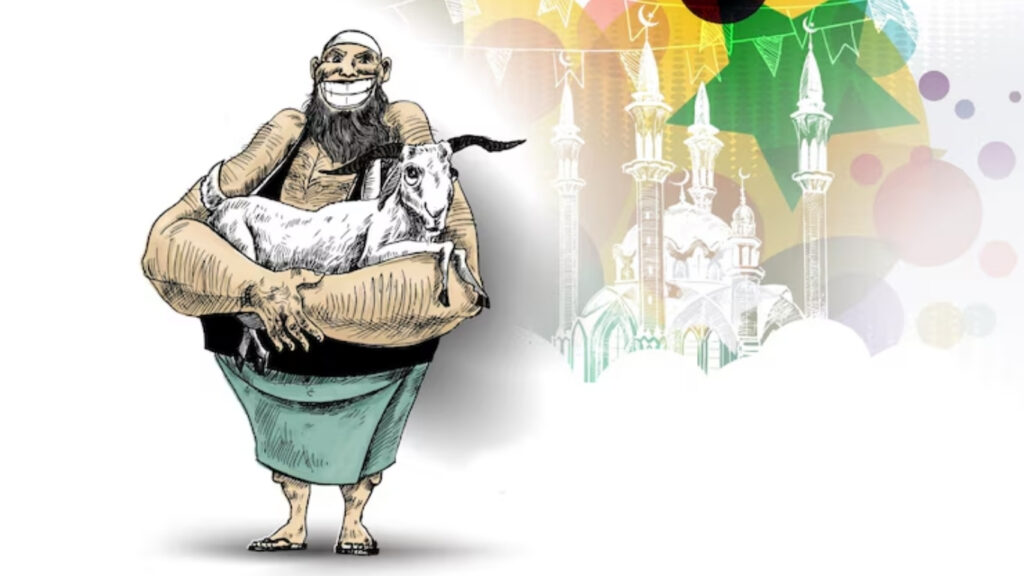Language is more than a tool of communication; it is a vessel of history, identity, and culture. One such linguistic hallmark that bridges ancient civilizations and modern geopolitical nomenclature is the Persian Suffix in Seven Country Names “-stan”. Derived from the Persian word istān (ایستان), meaning “place of” or “land of,” this suffix has been used for centuries to denote territories, homelands, or settlements of particular peoples or tribes.
Today, this suffix endures in the names of several countries, particularly in Central and South Asia, creating a unique linguistic footprint that reveals the vast cultural influence of the Persian language. In this article, we’ll explore seven modern countries that bear this suffix and delve into their etymological backgrounds, historical evolution, and the cultural threads that tie them together.
Understanding the Suffix “-stan”
Before we explore the countries, it is crucial to understand the origin and significance of the suffix “-stan”:
- Origin: The suffix originates from Old Persian sthāna, itself rooted in Proto-Indo-Iranian sthāna- and ultimately from the Proto-Indo-European root steh₂- which means “to stand, to stay, to place.”
- Meaning: In Persian and its linguistic relatives, “-stan” means “place of” or “land of.” For example, Hindustan means “land of the Hindus,” while Kurdistan means “land of the Kurds.”
- Usage: Historically, Persian served as the lingua franca of many regions in Central Asia, the Indian subcontinent, and the Middle East, facilitating the spread of this suffix into various place names.
The Seven “-stan” Countries and Their Persian Heritage: Persian Suffix in Seven Country Names
Here are the seven internationally recognized countries that include the Persian suffix “-stan” in their official English names:
- Pakistan
- Afghanistan
- Turkmenistan
- Uzbekistan
- Kazakhstan
- Kyrgyzstan
- Tajikistan
Let’s explore each of these countries, focusing on how the Persian suffix integrates with their identities.
1. Pakistan – “Land of the Pure”
Etymology: Persian Suffix in Seven Country Names
The name Pakistan is a modern creation, coined in 1933 by Choudhry Rahmat Ali, a student at Cambridge University. It’s a portmanteau with dual significance:
- “Pak” (پاک): A Persian word meaning “pure”
- “-stan” (ستان): Persian for “land” or “place”
Thus, Pakistan translates to “Land of the Pure.”
Historical Context: Persian Suffix in Seven Country Names
The term was originally used as an acronym representing Punjab, Afghania (North-West Frontier Province), Kashmir, Sindh, and Baluchistan—regions that now form the nation.
Persian Influence: Persian Suffix in Seven Country Names
Persian was the court language of the Mughal Empire and remained influential in the Indian subcontinent until the British colonial period. The cultural and administrative systems were deeply infused with Persian customs and vocabulary.
2. Afghanistan – “Land of the Afghans”: Persian Suffix in Seven Country Names
Etymology: Persian Suffix in Seven Country Names
- “Afghan”: Historically used to refer to the Pashtun people.
- “-stan”: Persian for “land”
Afghanistan thus means “Land of the Afghans.”
Historical Context: Persian Suffix in Seven Country Names
Though the name dates back centuries, it gained formal recognition in modern statehood during the 18th and 19th centuries.
Persian Influence:
Persian (specifically the Dari dialect) is one of Afghanistan’s two official languages. The cultural and literary traditions are deeply rooted in Persian civilization, which has influenced Afghan architecture, poetry, and governance.
3. Turkmenistan – “Land of the Turkmen”
Etymology:
- “Turkmen”: A Turkic ethnic group
- “-stan”: Persian for “land”
Together, Turkmenistan means “Land of the Turkmen.”
Historical Context:
Located along the Silk Road, Turkmenistan was part of various Persian and Turkic empires. Persian influence seeped into the region through trade, conquest, and religious propagation.
Persian Influence:
While modern Turkmen is a Turkic language, the country’s pre-Soviet literature and culture often bore Persian hallmarks. Persian remained a lingua franca in the region for centuries, especially in legal and religious contexts.
4. Uzbekistan – “Land of the Uzbeks”
Etymology:
- “Uzbek”: A major Turkic ethnic group
- “-stan”: Persian for “land”
Uzbekistan translates to “Land of the Uzbeks.”
Historical Context:
This region includes the historical cities of Bukhara and Samarkand—both renowned centers of Persian culture, science, and literature during the Islamic Golden Age.
Persian Influence:
Although Uzbeks are Turkic, Persian was the primary language of scholarship and administration in the region until the Russian conquest. Even today, Persian architectural styles dominate historic buildings.
5. Kazakhstan – “Land of the Kazakhs”
Etymology:
- “Kazakh”: Refers to a Turkic nomadic people
- “-stan”: Persian for “land”
Kazakhstan means “Land of the Kazakhs.”
Historical Context:
The suffix “-stan” was added during the Soviet era when formal country names were standardized across Central Asia.
Persian Influence:
Although Kazakhstan is largely Turkic, it was influenced historically through Persian-speaking intermediaries, traders, and Sufi mystics who traveled through the region.
6. Kyrgyzstan – “Land of the Kyrgyz”
Etymology:
- “Kyrgyz”: Refers to a Turkic ethnic group
- “-stan”: Persian for “land”
Kyrgyzstan translates to “Land of the Kyrgyz.”
Historical Context:
The modern nation was shaped under Soviet influence, but earlier, the territory was impacted by various empires, including Persian-speaking ones like the Samanids.
Persian Influence:
While Kyrgyz is the dominant language, Persian loanwords still exist in regional dialects and historical documents. The Persian presence also persists in literature and oral traditions.
7. Tajikistan – “Land of the Tajiks”: Persian Suffix in Seven Country Names
Etymology: Persian Suffix in Seven Country Names
- “Tajik”: A Persian-speaking ethnic group
- “-stan”: Persian for “land”
Tajikistan directly translates to “Land of the Tajiks.”
Historical Context: Persian Suffix in Seven Country Names
Among all the “-stan” countries, Tajikistan maintains the strongest linguistic and cultural connection to Persia. Tajik is a dialect of Persian (Farsi), written in Cyrillic due to Soviet influence.
Persian Influence: Persian Suffix in Seven Country Names
This influence is foundational rather than superficial. Tajikistan is arguably the most “Persian” country outside Iran. The country’s literature, education, and historical identity are deeply intertwined with Persian heritage.
Linguistic and Cultural Legacy of “-stan”
The enduring presence of “-stan” in these country names underscores a few critical linguistic and cultural truths:
- Persian as a Lingua Franca: From the Achaemenids to the Mughals, Persian was the language of administration, literature, and high culture in a vast swath of the Islamic world.
- Cultural Cohesion: The shared suffix helped create a sense of place and identity across tribal and ethnic lines.
- Soviet Standardization: The modern form of these names became standardized during the USSR’s rule in Central Asia, solidifying the “-stan” nomenclature in international recognition.
- Global Recognition: The suffix “-stan” now serves as a geopolitical and cultural identifier. Even in global discourse, “the -stans” is a shorthand for the cluster of Central Asian nations with shared historical roots.
The Broader Influence: Beyond Country Names
The Persian suffix “-stan” isn’t restricted only to sovereign countries. It is also widely used in non-sovereign and cultural regions, including:
- Kurdistan: Land of the Kurds (spanning Turkey, Iraq, Iran, and Syria)
- Hindustan: Land of the Hindus (historical name for India)
- Baluchistan: Region of the Baloch people (in Pakistan, Iran, and Afghanistan)
- Tatarstan: A republic within Russia
- Dagestan: Also a Russian federal subject
The usage of “-stan” in these names showcases the widespread historical influence of Persian culture even in places where the Persian language is no longer dominant.
Modern Implications and Misconceptions
The suffix “-stan” has also been subject to stereotypes and misinterpretations, especially in Western media. It is crucial to address and rectify these misunderstandings:
- Not Synonymous with Conflict: While some “-stan” countries have experienced instability, the suffix itself is neutral and cultural.
- Rich Histories: These nations have long histories of scholarship, poetry, science, and architecture that predate modern challenges.
- Diverse Identities: Despite a shared linguistic element, each country has a distinct identity shaped by local languages, traditions, and experiences.
Conclusion: A Shared Linguistic Heritage
The presence of the Persian suffix “-stan” in the names of seven modern countries is a testament to the profound and enduring influence of Persian language and culture. From Pakistan’s poetic identity as the “Land of the Pure” to Tajikistan’s living Persian tradition, each nation carries forward a shared legacy that bridges geography, ethnicity, and history.
Understanding this suffix isn’t just an exercise in etymology—it’s a window into the way language shapes our view of the world. The “-stan” nations, while diverse in culture and governance, remain interconnected by this linguistic thread that dates back thousands of years.
Key Takeaways:
- The suffix “-stan” means “land of” in Persian.
- Seven modern countries use it in their official names: Pakistan, Afghanistan, Turkmenistan, Uzbekistan, Kazakhstan, Kyrgyzstan, and Tajikistan.
- Persian influence is historical, cultural, and linguistic in these regions.
- Beyond semantics, the suffix connects diverse peoples through a shared past.






